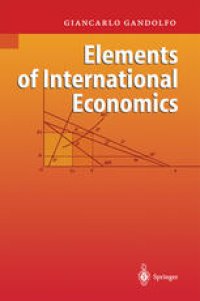
Ebook: Elements of International Economics
- Tags: International Economics, Macroeconomics/Monetary Economics
- Year: 2004
- Publisher: Springer-Verlag Berlin Heidelberg
- Edition: 1
- Language: English
- pdf
Modern economies become more and more open and the external sector of an economy becomes more and more important. This textbook aims at clarify ing how an open economy functions, in particular at explaining the determi nants of international fiows of commodities and financial assets. It also aims at examining the effects of these fiows on the domestic and international econ omy and the possible policy acti.ons at the national and international level. Particular attention will be paid to the problems of international economic at both the commercial and monetary level. integration Students will be able to read and interpret the balance of payments of a country, evaluating the various types of balance, to explain the behaviour of commercial fiows in the light of the theories studied, to analyze fiows of financial assets according to interest-rate differentials and other elements, to study the forces that determine exchange rates and cause currency crises, to understand the reasons behind international economic integration such as the European Union, to evaluate the effects of national and international policies.
This book details how an open economy functions. It explores the determinants of international flows of commodities and financial assets as well as examines the effects of these flows on the domestic and international economy and the possible policy actions at the national and international level. Particular attention is paid to the problems of international economic integration at both the commercial and monetary level.
This highly accessible textbook introduces students to the subject as well as equips them for further study. Advanced undergraduates and graduates will learn to read and interpret the balance of payments of a country, explain the behavior of commercial flows, analyze flows of financial assets according to interest-rate differentials and other elements, evaluate the effects of national and international policies, study the forces that determine exchange rates and cause currency crises, and to understand the reasons behind international economic integration, such as the European Union.